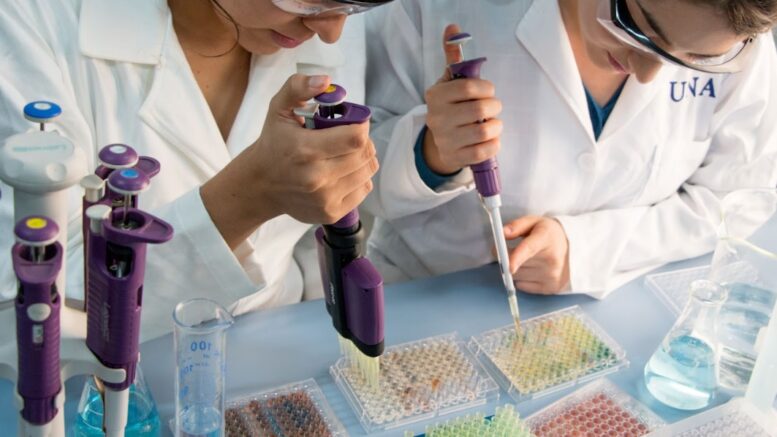Cell-based research plays a crucial role in understanding complex cellular mechanisms and developing effective treatments for various diseases. However, traditional methods have their limitations in terms of measuring multiple parameters simultaneously. This article introduces the Live Cell Multiplex Assay as an innovative technique that overcomes these limitations by enabling the simultaneous measurement of multiple cellular parameters. By providing a comprehensive understanding of cellular mechanisms, this assay has the potential to advance cell-based research and contribute to significant advancements in biomedical science.
The Limitations of Traditional Cell-Based Research Methods
Traditional cell-based research methods have several limitations that hinder their effectiveness and reliability. These challenges stem from the inherent drawbacks of using fixed end-point assays, which fail to capture the dynamic nature of cellular processes. One major issue is the inability to assess real-time changes in cell behavior over extended periods, as these methods typically require sacrificing cells for analysis. Additionally, traditional techniques often rely on single-parameter measurements, limiting the ability to comprehensively analyze complex biological systems.
The lack of multiplexing capabilities further hampers researchers’ ability to simultaneously investigate multiple cellular events within a single experiment. Moreover, these methods are prone to artifacts and experimental variability, leading to unreliable results. Overall, the constraints imposed by traditional cell-based research methodologies highlight the need for innovative approaches such as live cell multiplex assays that can overcome these limitations and provide more accurate and comprehensive insights into cellular mechanisms.

Introducing the Live Cell Multiplex Assay
In the realm of cellular analysis, a novel approach has been developed to simultaneously measure multiple parameters within living cells. This innovative technique is known as the Live Cell Multiplex Assay. Unlike traditional cell-based research methods, this assay enables real-time analysis of various cellular parameters, providing researchers with valuable insights into dynamic cellular processes.
The Live Cell Multiplex Assay allows for the integration of data from different parameters, facilitating a comprehensive understanding of cell behavior. By combining this assay with advanced imaging technologies and sophisticated data analysis tools, researchers can obtain precise and objective measurements of cellular responses. This advancement in cell-based research methods opens up new possibilities for studying complex biological systems and holds great promise for advancing our understanding of cellular functions.
Simultaneous Measurement of Multiple Parameters
By simultaneously measuring multiple parameters, researchers gain a comprehensive understanding of cellular behavior and obtain precise measurements of cellular responses. The live cell multiplex assay enables the simultaneous measurement of various parameters within live cells, providing valuable insights into complex cellular processes. This approach is particularly useful in high throughput screening, where large numbers of samples need to be analyzed quickly and efficiently.
The ability to measure multiple parameters simultaneously allows for more efficient use of resources and reduces the time required for data collection. Furthermore, the incorporation of advanced data analysis techniques enhances the accuracy and reliability of the results obtained from live cell multiplex assays. Overall, this technology offers a powerful tool for advancing cell-based research by enabling researchers to investigate multiple aspects of cellular behavior in an objective and evidence-based manner.
Advancements in Cellular Mechanism Understanding
Advancements in understanding cellular mechanisms have led to significant progress in uncovering the intricacies of complex biological processes. The development of live cell multiplex assays has contributed to these advancements by allowing simultaneous measurement of multiple parameters within living cells. This technology has greatly enhanced our ability to study cellular signaling pathways and their role in drug discovery.
By utilizing fluorescent probes or biosensors, researchers can monitor various cellular events such as calcium flux, kinase activity, and protein-protein interactions in real time. These assays provide valuable insights into the dynamic nature of cellular processes and help identify potential targets for therapeutic intervention. With ongoing advancements in live cell imaging techniques and the availability of more sophisticated assay platforms, our understanding of cellular mechanisms continues to evolve, opening up new opportunities for drug development and personalized medicine.
Applications and Future Potential of the Live Cell Multiplex Assay
The applications and future potential of the live cell multiplex assay lie in its ability to provide a comprehensive understanding of cellular processes, enabling the identification of novel drug targets and the development of personalized medicine approaches. This assay offers a powerful tool for drug discovery by allowing researchers to simultaneously measure multiple cellular parameters in real time. By incorporating various fluorescent probes and imaging techniques, it enables the analysis of diverse cellular mechanisms such as cell proliferation, apoptosis, oxidative stress, and protein expression levels.
Furthermore, this assay can be used to evaluate how different drugs or compounds affect these cellular processes, providing valuable insights into their mechanisms of action and potential therapeutic uses. In addition to drug discovery, the live cell multiplex assay holds promise in personalized medicine approaches by facilitating the characterization of patient-specific responses to treatments and aiding in the selection of targeted therapies based on individual cellular profiles.
